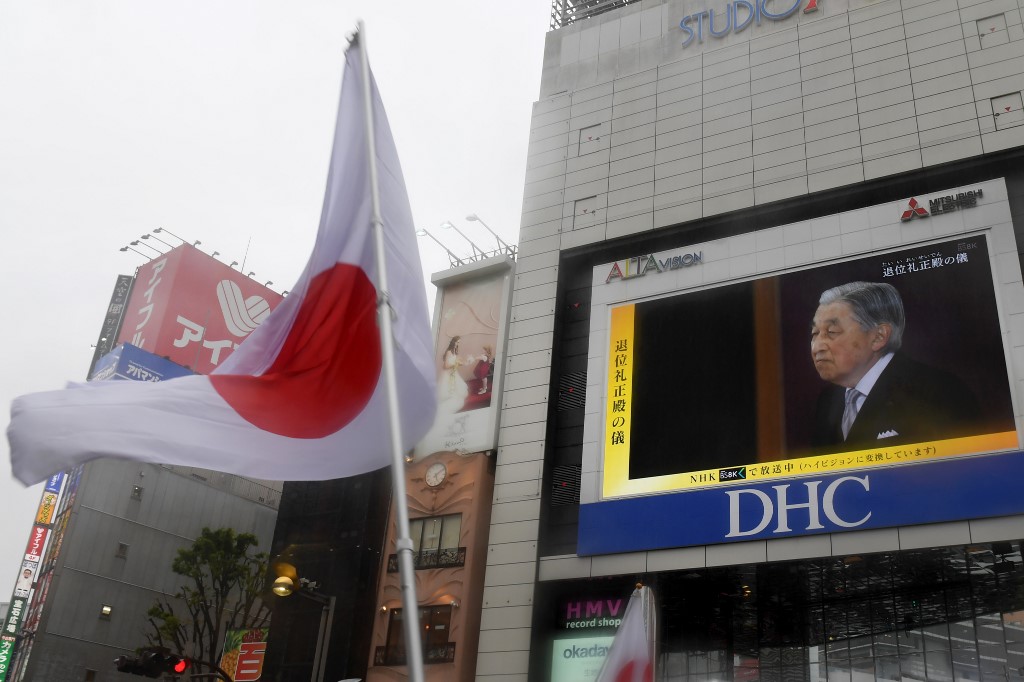
TOKYO, Japan (AFP) — Outgoing Japanese emperor Akihito on Tuesday performed the main ritual to hand over the Chrysanthemum Throne to his son Naruhito — Japan’s first abdication in more than two centuries.
Akihito technically remains emperor until the stroke of midnight when the country ushers in the new imperial era of Reiwa, or “beautiful harmony”, that will last as long as Naruhito reigns.
In a brief speech, the 85-year-old said he had spent the 30 years of his reign performing his duties with “deep respect and love for the people.”
“That has been a great blessing,” he added.
And he offered his “heartfelt gratitude to the people of Japan who accepted me as the symbol of the state and supported me.”
The brief ritual in the sumptuous “Room of Pine” in Tokyo’s Imperial Palace saw the outgoing emperor turn over the throne in the presence of the imperial regalia — an ancient sword and sacred jewel that are considered to legitimise an emperor.
Prime Minister Shinzo Abe thanked the emperor, who took the Chrysanthemum Throne in 1989, saying he had “fulfilled his responsibility as the symbol of Japan.”
And he said the royal couple, known for their trips to comfort the victims of natural disasters, had given Japanese people “courage and hope.”
© Agence France-Presse







